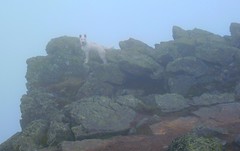Thought I'd ask the outdoor photography folks for their opinions.
Sometimes photoshopping photography is necessary to 'rescue' an otherwise spectacular or special photograph. But when does altering photos cross the line from photgraphy to art?
With the explosion of digital photography the last few years, I've seen some gorgeous outdoor images. Sometimes modifications have been done with such a light and subtle touch that it's impossible to tell if the photo has been altered. Othertimes I've seen beautiful photos that scream 'Photoshop' when I look at them. They are beautiful, but they don't look like anything that the camera lens or human eye captured.
This has led me to wonder where the artistry behind the lens stops and the digital alchemy begins. I like all outdoor photography but sometimes wonder if a little 'P' should appear in the bottom corner of photos to denote that post photo processing was heavily at work.
Sometimes photoshopping photography is necessary to 'rescue' an otherwise spectacular or special photograph. But when does altering photos cross the line from photgraphy to art?
With the explosion of digital photography the last few years, I've seen some gorgeous outdoor images. Sometimes modifications have been done with such a light and subtle touch that it's impossible to tell if the photo has been altered. Othertimes I've seen beautiful photos that scream 'Photoshop' when I look at them. They are beautiful, but they don't look like anything that the camera lens or human eye captured.
This has led me to wonder where the artistry behind the lens stops and the digital alchemy begins. I like all outdoor photography but sometimes wonder if a little 'P' should appear in the bottom corner of photos to denote that post photo processing was heavily at work.




